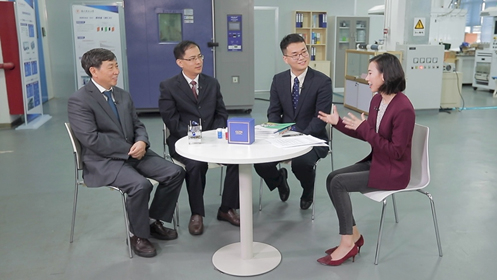
Technology
11:52, 09-Mar-2019
CGTN Listens: The 'last mile' of technology transfer
Updated
13:37, 09-Mar-2019
By He Weiwei
05:21

Technology is one of the key topics on the table at the Two Sessions. Over six million Chinese now work in research and development. But how to turn academic findings into real products is crucial. CGTN reporter He Weiwei went to Shenzhen city, China's "Silicon Valley," to listen to insiders' opinions.
Three approaches of technology transfer
Southern University of Science and Technology (SUSTech) in Shenzhen established a technology transfer center two years ago. Liao Xiao, project manager of the center introduces three approaches of technology transfer: direct IP licensing or transfer, collaboration between enterprises and researchers, and establishing start-up companies.
The role of the technology transfer is to facilitate the process by connecting the university, enterprises and government bodies to share resources. After a start-up firm is established, the center also provides services including taxation, accounting and legal issues, among others.
IP ownership: Difference between China and the U.S.
The mentioned patterns of technology transfer in China are quite similar to those in other countries such as the U.S. Cheng Xin, head of SUSTech's Department of Materials Science & Engineering said there's something different when it comes to IP rights.
In China, start-up companies or VC investors often require a transfer of the IP ownership from the University. While in the US, the university only licenses the development right of the IP to companies.
Funding, personnel & customized equipment: Key to technology start-ups
Wang Haijiang, fellow at the Canadian Academy of Engineering says the biggest difficulties when starting up his company were finding investments, skilled personnel and special equipment.
The technology transfer center and the local government helped a lot in the field. Shenzhen's input in research and development accounts for over four percent of its GDP, which doubles the national average in China. A world-renowned manufacturing base, Guangdong Province provides all kinds of components required for a technology company.
(Lai Shiwen also contributed to this story.)

SITEMAP
Copyright © 2018 CGTN. Beijing ICP prepared NO.16065310-3
Copyright © 2018 CGTN. Beijing ICP prepared NO.16065310-3